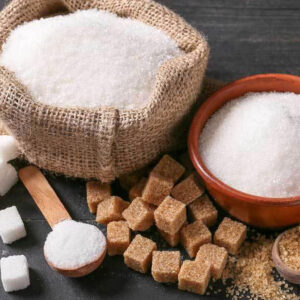The difference between beet sugar vs cane sugar extends beyond flavor to how they are grown.
Exploring the Distinctions being used and Advantages In Between Beet Sugar Vs Cane Sugar
In the culinary globe, the option in between beet sugar and cane sugar is not simply concerning sweetness but includes a nuanced consideration of taste, application, and influence. While both sugars stem from various plants, each undergoes special production procedures that subtly influence their characteristics and viability for numerous meals. As cooks and consumers significantly prioritize both the ecological and flavor profiles of their active ingredients, comprehending these distinctions becomes vital. This exploration offers understanding right into how each sugar kind can best boost culinary developments.
Origins and Production Procedures of Beet and Cane Sugar

Cane sugar, on the other hand, originates from the sugarcane plant, a tropical turf indigenous to Southeast Asia yet now cultivated in tropical zones worldwide. The manufacturing of cane sugar begins with the harvesting of cane stalks, which are squashed to release the juice. This juice is then steamed to focus it, after which it is rotated in centrifuges to generate raw sugar crystals. These crystals are further refined to create the white sugar generally available in stores.

Nutritional Material and Wellness Considerations

When comparing the nutritional content of beet sugar and cane sugar, it comes to be evident that both kinds basically supply the very same caloric values, with about 16 calories per tsp and no substantial nutrient variety. Each is made up almost completely of sucrose, which is a straightforward carbohydrate that uses fast power but lacks vitamins, minerals, or fiber. This similarity encompasses their effect on health and wellness, specifically worrying blood sugar level levels. Both sugars, when consumed in excess, can add to raised blood sugar degrees, a risk factor for diabetes and other metabolic disorders. Furthermore, extreme intake can result in weight gain and dental problems, as both sugars are equally cariogenic, promoting tooth decay. From a health and wellness his comment is here perspective, moderating consumption of any kind of kind of sugar, whether from beet or cane, is a good idea to prevent these prospective negative effects on well-being. Hence, neither holds a distinctive advantage over the various other in terms of health benefits.
Flavor Accounts and Culinary Applications
In spite of their similar chemical frameworks, beet sugar and cane sugar differ discreetly in flavor, which can affect their use in different culinary contexts. Walking stick sugar frequently lugs a tip of molasses, also in its polished type, offering a warm, caramel-like touch that enhances baked items, coffee, and chocolate-based recipes. This mild molasses flavor is specifically valued in the baking market for adding depth to desserts and pastries. On the various other hand, beet sugar is characterized by its extremely improved, neutral taste, making it a functional sweetener that does not change the taste profiles of dishes. This nonpartisanship is particularly helpful in delicate useful content recipes, such as light breads, lotions, and some sauces, where the inherent tastes of various other ingredients are meant to attract attention. Chefs and food makers could choose one type of sugar over the other based on the preferred taste end result of their culinary creations.
Environmental Impact and Sustainability
While both beet and cane sugars are obtained from plants, their environmental influences differ significantly due to the distinctive techniques of cultivation and handling required for each. Sugar beet farming commonly involves comprehensive automation, which can enhance fossil fuel intake and carbon exhausts.
In addition, the processing of sugarcane commonly creates a significant quantity of waste, including bagasse, which, although usable as biofuel, regularly adds to air contamination if shed inefficiently. Sugar beet processing utilizes more of the raw products, leading to much less waste. Both sectors deal with difficulties in decreasing their ecological footprints, yet ongoing technologies in agricultural techniques and waste monitoring are intending to enhance sustainability.
Economic Variables Influencing the Sugar Industry
The economic dynamics of the sugar industry are considerably affected by global market demands and trade policies. In areas where sugarcane or sugar beet manufacturing is subsidized, manufacturers may have a financial advantage that allows them to supply reduced prices on the global market.
Additionally, changes in international demand for sugar, influenced by dietary fads and commercial use in foodstuff, straight effect prices and production levels. beet sugar vs cane sugar. Weather problems additionally play an essential function, as they can considerably influence plant yields and, consequently, the supply chain. This irregularity introduces a degree of economic unpredictability that can cause investment volatility in sugar manufacturing markets, influencing choices from planting to market strategy
Verdict
In verdict, both beet and cane sugar have unique top qualities that suit different cooking needs. While cane sugar imparts a rich taste ideal for improving Continued baked items, beet sugar's neutrality is ideal for lighter recipes.